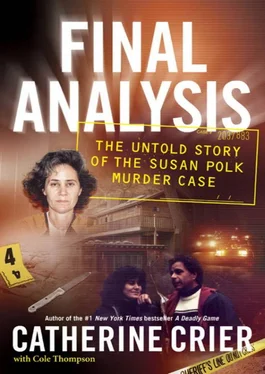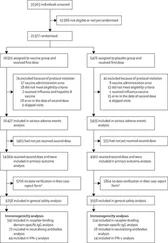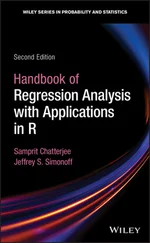The county had retained Brian Peterson, a private forensic pathologist to perform the autopsy. At the time, he had performed close to five thousand autopsies and testified as a forensic expert in hundreds of criminal cases. His resume spanned more than twenty years and included a forensic fellowship at the Armed Forces Institute of Pathology in Washington, D.C., and work as a general medical officer with the U.S. Marines.
In the months following Felix’s death, Dr. Peterson would gain notoriety for his role in the case of missing Modesto housewife, Laci Peterson, who disappeared on Christmas Eve of 2002. Dr. Peterson conducted the autopsies on Laci and her unborn son, Connor, after their bodies washed up in San Francisco Bay. A California jury later found Scott guilty of the double homicide and sentenced him to death for the murders.
At 8 AM, Felix’s autopsy got underway. The body of the seventy-year-old was laying in an opened body bag on a gurney, clad only in the pair of black men’s briefs that Polk had been wearing when he was killed. Peterson began by washing off the dried blood that covered most of his torso and the bottoms of both feet. Once the corpse was clean, it was easier to locate the multiple red stab wounds and countless scratches on his arms, hands, and feet. Dr. Peterson observed that five of the wounds had pierced the victim’s lung, stomach, and kidney, while the remaining twenty-two slashes were determined to be “superficial” cut-type wounds or defensive wounds. One cut that actually penetrated the muscle and tendon of one finger indicated that Felix had tried to grab the blade of the knife.
From these details, the pathologist concluded that Felix’s death had been violent, with the stab wounds occurring in rapid succession. He determined the cause of death to be “a combination of the blunt force trauma injuries and the numerous knife wound injuries” Polk had sustained during the assault. “Probably the easiest way to think about them [the injuries] is that the victim is trying to protect himself, so he’s either trying to block the knife with his hands, with his forearms, [or] maybe he’s trying to grab the knife to prevent from being stabbed again,” Dr. Peterson later told a Grand Jury.
Dr. Peterson described five of the injuries as “significant stab wounds” that had penetrated deep, entering the body cavity. The first was five and half inches deep, located just beneath the collarbone. According to Peterson, the knife entered the chest wall and punctured the right upper lung lobe, causing it to collapse. There were several scratches around the wound, indicating the tip of the knife had slashed the skin. Beneath the first wound was a second major stab wound that measured one and half inches deep. Here the knife had penetrated the pericardial sac, the soft tissue sac surrounding the heart, and had stopped just short of puncturing the heart. A third stab wound was identified in the lower left abdomen, just below the rib cage, where the knife penetrated the abdominal wall and pierced the front of the stomach. Dr. Peterson was unable to determine how deep the injury was because of the partially digested food in Felix’s stomach, which Dr. Peterson hypothesized had prevented the knife from doing further damage to the stomach.
On the upper left side of Felix’s back, there was a fourth stab wound measuring three inches in depth that penetrated the chest wall into the diaphragm. The fifth injury had an odd pattern that Peterson identified as a “combination cut and stab.” The actual stab wound was five inches deep and surrounded by a jagged surface laceration. There was a bruise just above the stab wound that indicated the victim suffered a blunt force injury in that same location. Dr. Peterson concluded that the knife entered the fatty tissue but did not reach the kidney. “Either the knife was being moved vigorously up and down, or else the victim was moving so there was stabbing and cutting and a scratch of the tip where the tip came out,” he later explained.
Based on this evidence, Dr. Peterson surmised that the blade used in the attack was a single-edged knife, measuring at least five and a half inches long, but he was unable to determine in what order the injuries had occurred or a precise time of death.
After he analyzed each of the individual stab wounds, Dr. Peterson determined that the wound where the knife penetrated the right lung lobe and the one just below it where the knife entered the sac around the heart had caused the most internal bleeding and “could have been lethal.” He classified the remaining twenty-two stab wounds as “relatively superficial,” noting that they varied in severity.
In addition to the wounds from the knife, there were also three different “blunt force injuries” on Felix’s body. There was an abrasion on one knee and a bruise in the middle of his back, just below one of the five deep stab wounds. Peterson ruled that neither of those was particularly significant in terms of death. A third injury, however, located three inches above the right ear canal and measuring one and a half inches long by one-eighth inch wide, indicated a “relatively good impact” to the head. There was no associated brain injury, but it appeared the bruise was consistent with “being hit with something,” the pathologist said. Dr. Peterson theorized that the injury to the head might have incapacitated Polk and limited his ability to fight back.
“If the injury had occurred at the onset of the fight, it’s possible his struggles were less effective,” he theorized. “In other words, Felix could have been stunned, or partially stunned, by getting hit in the head and less able to defend himself in any effective way.” While Dr. Peterson could not determine what caused the three blunt force injuries, he believed it was “from a blow” rather than a fall. Nevertheless, he could not find any pattern on the skin, such as a shoe tread or hammer impression that could help police identify the instrument that was used.
Interestingly, the forensic examination revealed that Felix Polk had high blood pressure and suffered from coronary heart disease. The left main coronary artery and the left anterior descending artery that provides blood to the left chamber were both blocked; a condition that “causes a lot of problems, including sudden death,” Dr. Peterson noted in his testimony to the Grand Jury in August 2003. Meanwhile, Felix’s heart weighed twice that of a normal heart for someone of his size and age. “It was a significantly sick heart,” Dr. Peterson said. “It didn’t cause his death, but it’s likely a factor…. He had heart disease going into the attack, and as emotions ran high as [he was] being killed, it wouldn’t have been unusual for him to have heart symptoms,” he observed.
Later, when asked by a member of the Grand Jury why Felix Polk did not scream for help, Dr. Peterson pointed to three factors: Felix’s heart disease, the blunt force trauma to the head, and the two quick and deep chest wounds. “Faced with that kind of attack, I think, I personally would have spent more time trying to defend myself as opposed to calling out,” Dr. Peterson said. “Again, he was relatively stunned from the blow to the head… confused, and simply not able to.”
In the days following the Orinda murder, journalists reported that Felix Polk was brutally stabbed—conjuring up images of Anthony Perkins in the movie Psycho. At a press conference at Orinda police headquarters, Police Chief Dan Lawrence allayed fears that a killer was on the loose in the community. He assured residents of the quiet East Bay community that the homicide at the Polk residence was “not a random murder,” but a “domestic-violence issue.” In the weeks prior to the murder, officers were summoned to the Polk home in response to domestic disputes, he said. In addition, evidence found during a search of the residence indicated the victim’s wife played a role in the crime, he said.
Читать дальше











